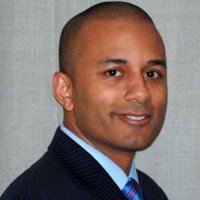 Speech recognition and other technologies can improve physician productivity in EHR adoption
Speech recognition and other technologies can improve physician productivity in EHR adoption
Dr. Andres Jimenez
CEO of ImplementHIT
My team recently conducted an in-depth analysis on a large Nephrology group whose patient visits had plateaued at 78 percent of pre-electronic health record (EHR) implementation levels for over a year. Notes averaged eight-pages long, with an average History of Present Illness word-count of 600-words per note, compared to 135-words per note in Internal Medicine and 210-words per note in Pulmonary at better functioning sites using the same EHR. At first glance, their increase in overall patient visit time would appear to be caused by the time needed to enter all this clinical data into the EHR. However, since the majority of the note data is copied forward visit-to-visit to create a running history, the increase in visit time had to be connected with something else.
It quickly became evident these long notes interrupted clinical continuity on subsequent visits. On a subsequent visit, a physician in the group who may not have seen the patient last would need to sift through all this clinical data before assuming responsibility for the patient’s care. This would pose an even greater challenge for referring providers outside the practice, or other consultants involved in a patient’s care. This common problem highlights the important relationship between entering and retrieving clinical data, and why the focus must be on relevance that leverages discrete data on both sides of this exchange to achieve efficiency.
In my opinion, the three most important areas to focus on in order to improve physician productivity and adoption of their EHR, are the following:
- Enabling the efficient entry of relevant clinical data;
- Ensuring the seamless retrieval of relevant clinical data; and
- Providing physicians with ongoing EHR training to know how to perform the two items above using some level of discrete data, and do so efficiently.
There is an overabundance of clinical data in electronic charts today so physicians must have the tools they need to efficiently enter data where it is easy to retrieve the most relevant components based on the type of medical problems commonly managed by your specialty. Favorite lists, specialty priority lists, user personalization, flow sheets, and order-sets are tools available in most EHRs to support relevant discrete data entry and retrieval. Improvements in non-discrete data entry can come also quickly with an emphasis on relevance through the use of speech recognition technology.
As a fast typist, I leaped from 60-words per minute to 100-words per minute with basic use of speech recognition in my clinical practice. By incorporating the use of Macros for my most commonly spoken phrases, I took an even greater leap to 100-words per second for each macro. Unfortunately, most physicians don’t know how to efficiently enter non-discrete or discrete relevant clinical data with the tools at their disposal (EHR and speech recognition). Our group, ImplementHIT, also recently conducted a physician survey that showed the majority of physicians are only using the basic features and functionality of their EHR. Typically the best solution to drive physician productivity and adoption is not to replace current systems, or radically change workflows; a simpler higher yield approach is to ensure physicians actually know how to efficiently use the tools currently at their disposal. Industry experts are quickly beginning to realize that physicians learn the most about their EHR in the post-implementation phase, where growing experience fuels inquiry and context to learn more advanced features. These are the advanced features on how to efficiently enter and retrieve clinical data that may have been introduced before implementation, but without sufficient context at the time, or refresher training afterwards, are commonly forgotten.
Continued focus must be placed on arming physicians with the technology and training they need to improve productivity amidst mounting digital change. Exciting technologies such as natural language understanding, which allows the automatic extraction of discrete data from spoken text, can further help simplify the process. Nonetheless, training to use simpler, more powerful tools will remain essential. What tools or techniques do you use or plan to adopt in order to boost physician productivity in context of the EHR?
Dr. Andres Jimenez is CEO of ImplementHIT, a leading health IT training organization, and nationally recognized expert on physician productivity, training and speech recognition. He was the former Clinical Director of Content and Training for Allscripts. Join Dr. Jimenez for the Harness the Power of the Dragon through your EHR webinar on Tuesday, April 16, 2013 at 12:00 PM EST. In this webinar event, Dr. Jimenez will share an insightful view of the productivity gained through use of Dragon Medical, the leading speech recognition software. Learn more.
